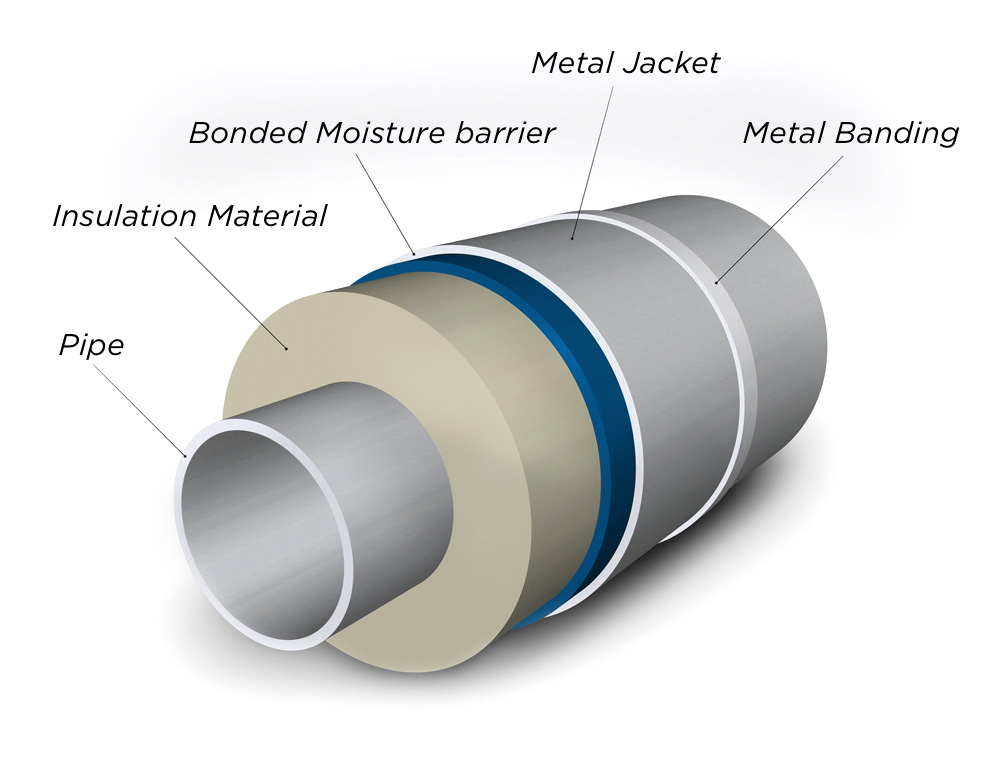DryMet: The Most Effective Moisture Barrier
The oil and gas industries are major drivers of technological advancement; as these industries grow, they require the most modern tools, techniques and materials in order to continue production safely and efficiently. Making sure that the machinery used in production remains free from corrosion has always been of considerable importance, with the methods of protection requiring continuous improvement as capacity increases.
Preventing corrosion from occurring on or under metal jacketing and cladding requires the use of a barrier and the first barriers to be used were paint-based. These were largely replaced with Polykraft, a combination of Kraft paper layered onto polyethylene. Today, there is an even better option: DryMet from BS Stainless.
DryMet is part of a family of products unique to BS Stainless and comprises a layer of Surlyn® bonded to polyethylene, a combination that offers many important advantages over more traditional solutions. These include:
-
Zero pinholes: impossible to see with the naked eye yet open to let damaging moisture get through, pinholes are a major issue with moisture barriers. DryMet has no pinholes, compared with 16 in Polykraft and 20 in paint barriers (per 50 sq.ft)
-
Lowest water ingress: WVTR(g/100 in2-day) in paint is unknown but likely to be higher than Polykraft at 1.0: DryMet scores <0.05 by comparison
-
Superior strength: paint can be scratched by hand as it is so weak, while Polykraft retains moisture with its paper-based composition. DryMet, with its Surlyn® technology, is the toughest solution yet
The move away from Polykraft is almost complete, with most FEED and EPC engineers preferring the vastly-improved reliability and efficiency of Surlyn® technology. DryMet, fabricated in-house using our unique specialist machinery, further increases the versatility of Surlyn® and can be combined with a number of other coatings to suit bespoke requirements.
ASTM C1729 “Aluminium Jacketing for Insulation” offers an extraordinary insight into the complex process, providing unrivalled detail. Page 2 is of particular significance, with information on DryMet-type polyfilm moisture barriers.
Need further advice? Contact our team TODAY.
